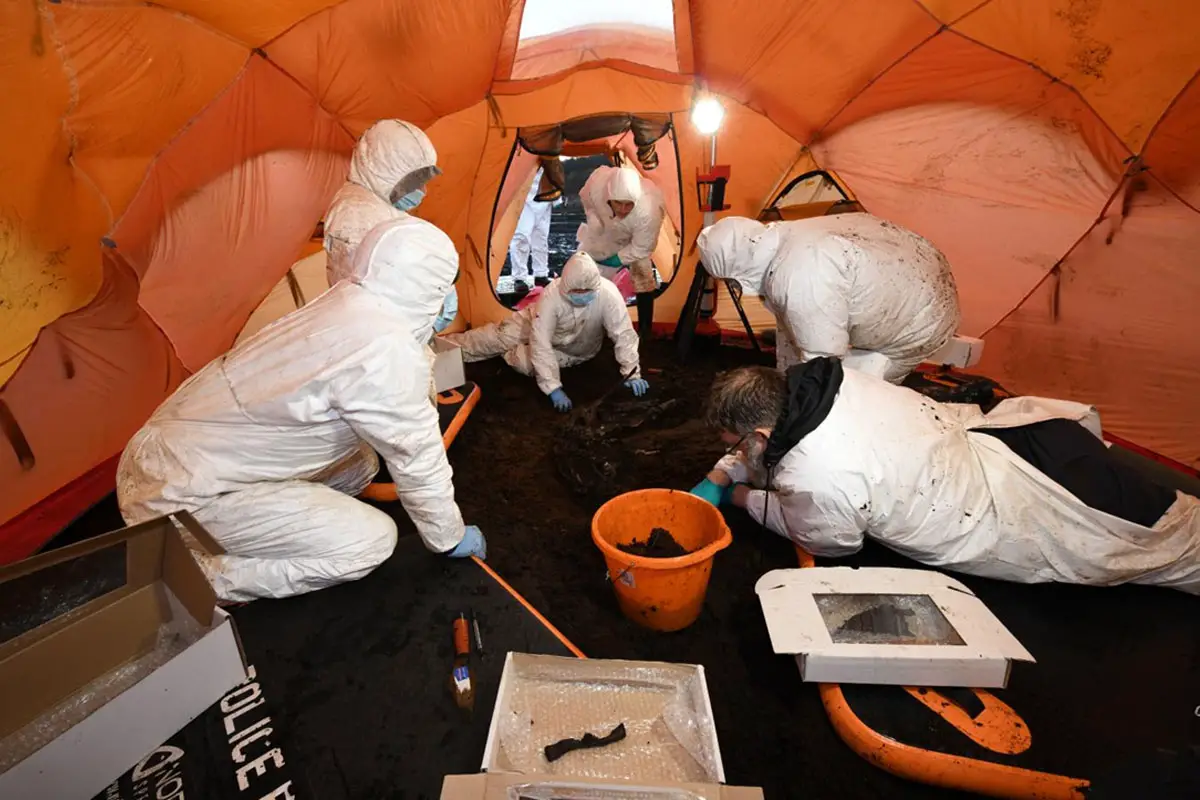A multi-institutional team of scientists, led by National Museums NI, has revealed new findings into a bog body discovered in Bellaghy, Northern Ireland.
Dating to between 343 and 1 BC during the Iron Age, an osteoarchaeological analysis has determined that the remains belong to a female aged between 17 and 22 years old. Experts highlight the significance of this discovery, as most bog-preserved individuals from this period have been identified as male.
An examination of the neck vertebrae revealed traces of cut marks, indicating that the woman was intentionally decapitated. According to the study authors, this suggests a ritual or sacrificial practice, as many bog bodies exhibit evidence of stabbing, bludgeoning, hanging, strangulation, or in certain cases beheaded. Although the body was well-preserved, the skull was missing and was not recovered.
As per the naming convention applied to similar discoveries – the townland where remains are found paired with the sex of the individual – the remains will now be referred to as the “Ballymacombs More Woman”.
Niamh Baker, Curator of Archaeology at National Museums NI, said: “Ballymacombs More Woman is certainly one of the most important archaeological discoveries on the island of Ireland. This important discovery gives us a glimpse into the lives of the people of our ancient past and offers insights into how they lived, interacted with their environment, and developed their cultures.”
“As the organisation with statutory responsibility for acquiring, curating and conserving nationally significant archaeological finds in Northern Ireland, we immediately understood how a thorough research process would be required to ensure that this discovery was managed professionally and ethically to unlock her valuable story,” added Baker.
The Ballymacombs More Woman has been transferred from the State Pathology Laboratory to National Museums NI, where the conservation team is closely monitoring before a final phase of preservation treatment.
Header Image Credit : PNSI
Sources : National Museums NI





